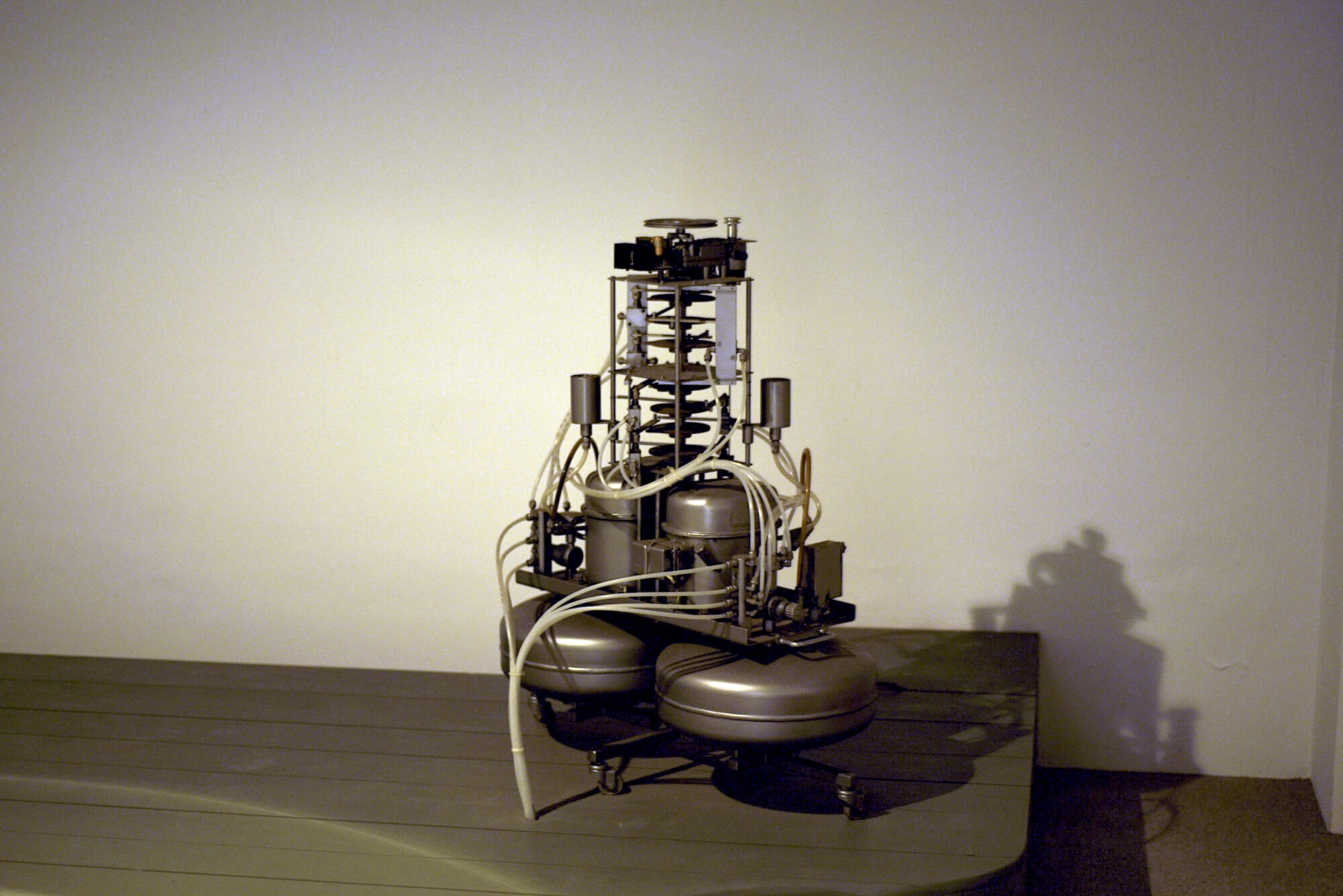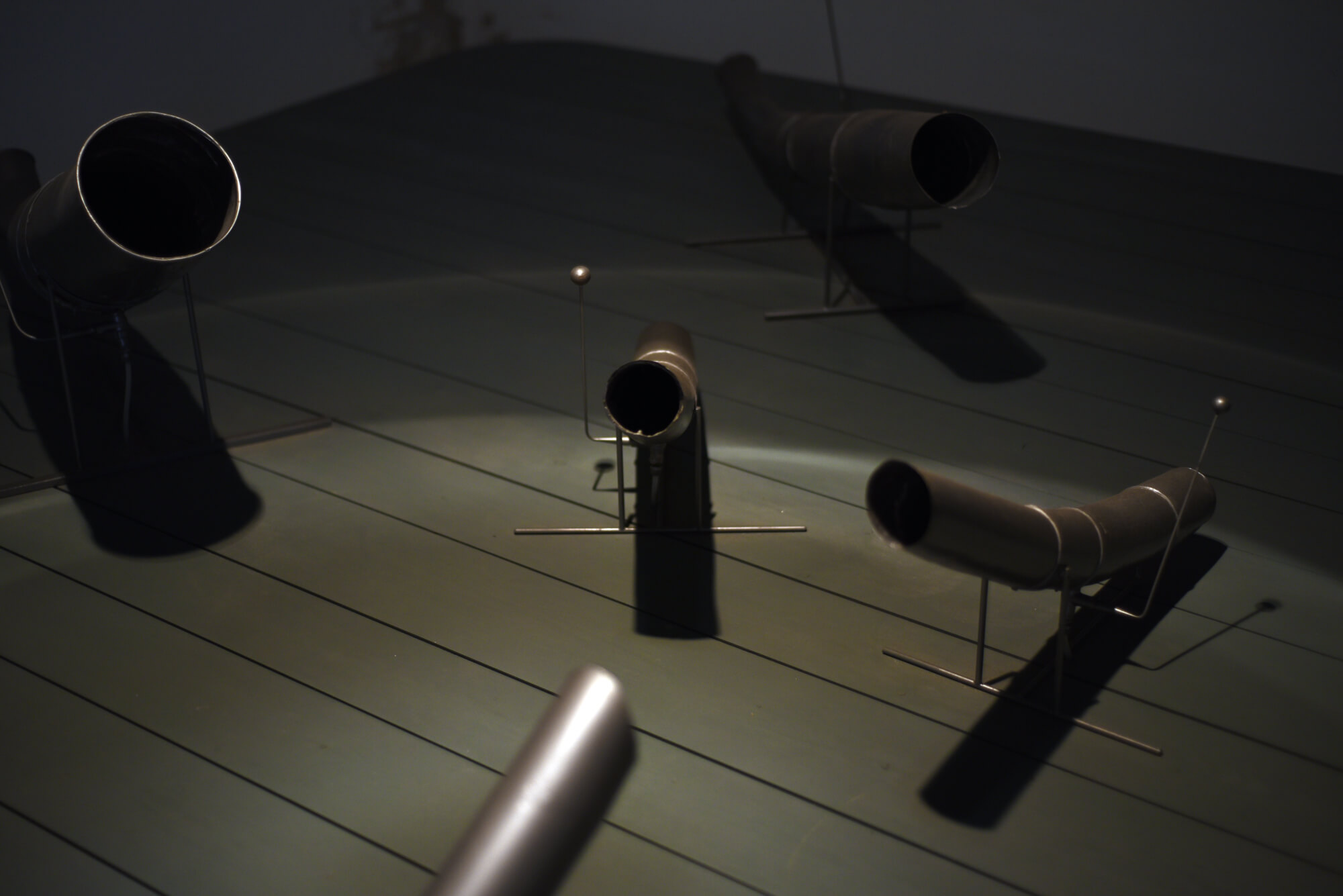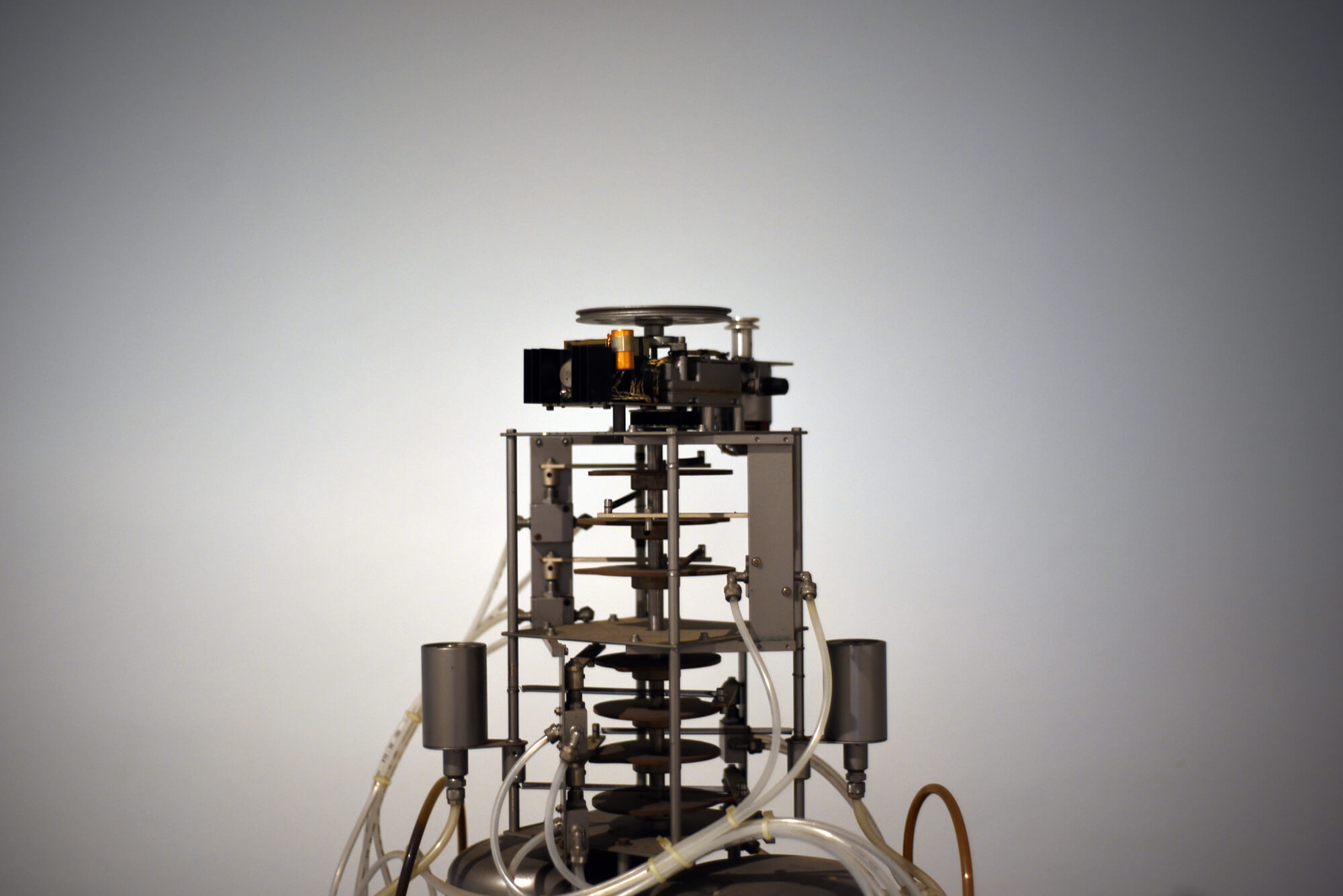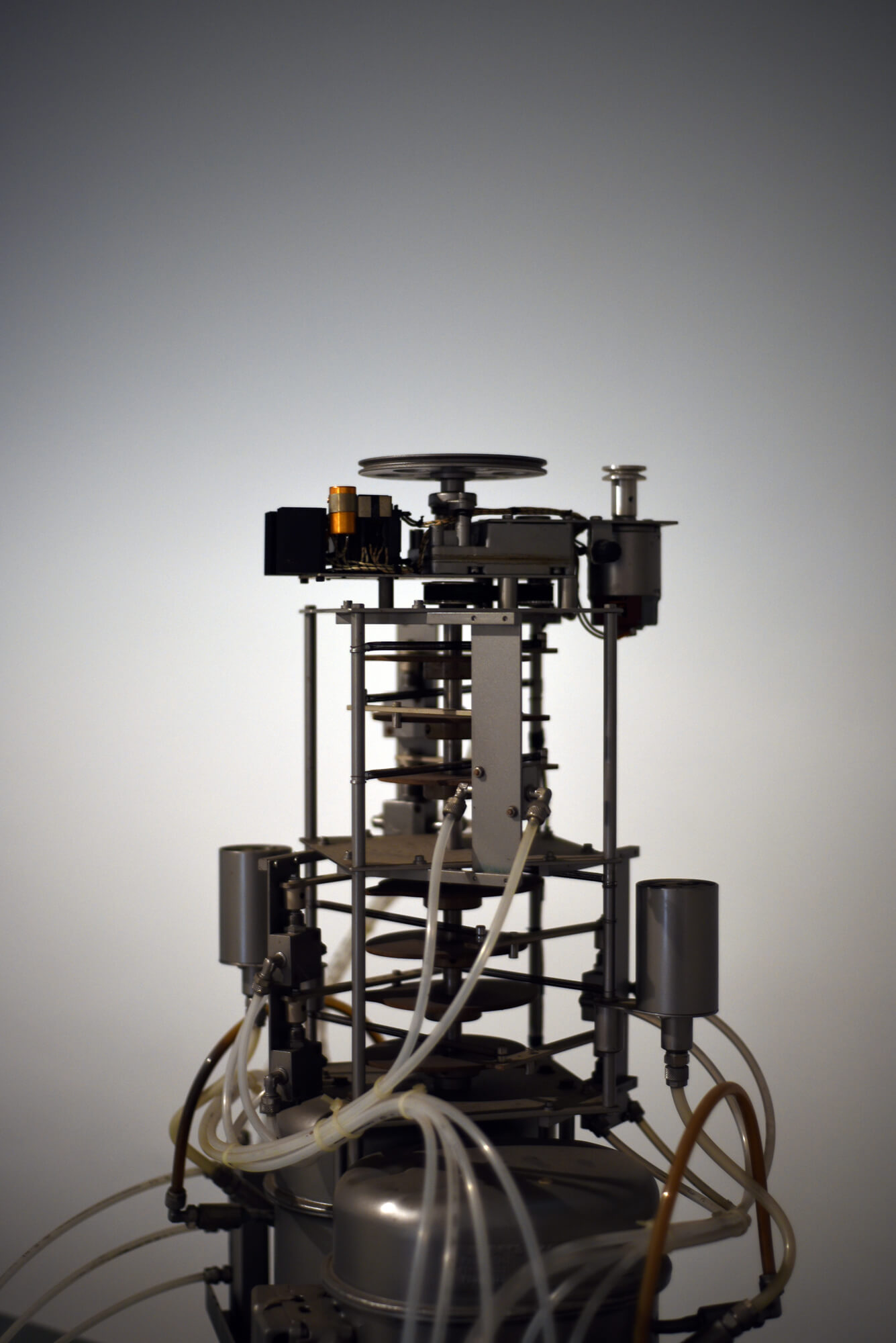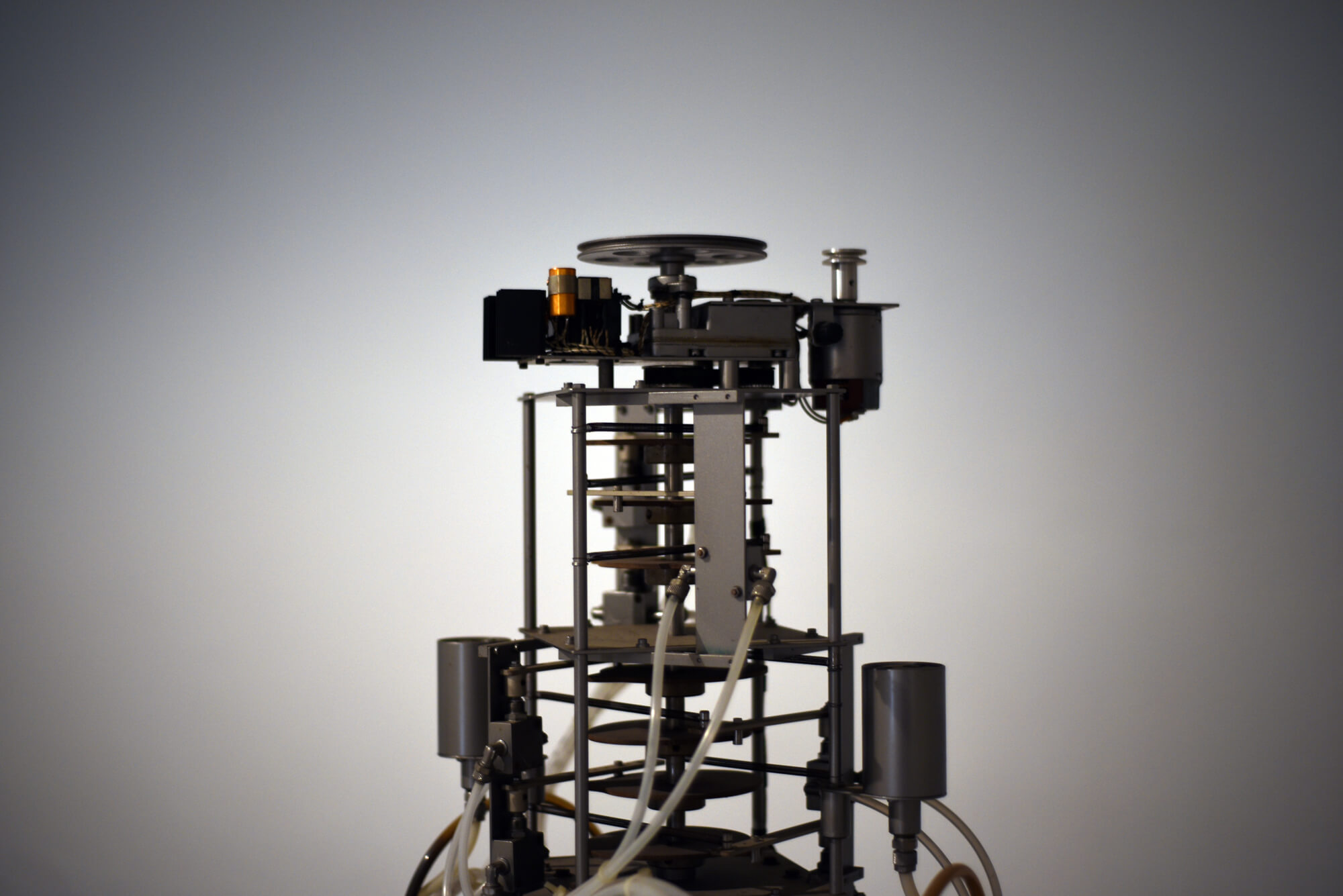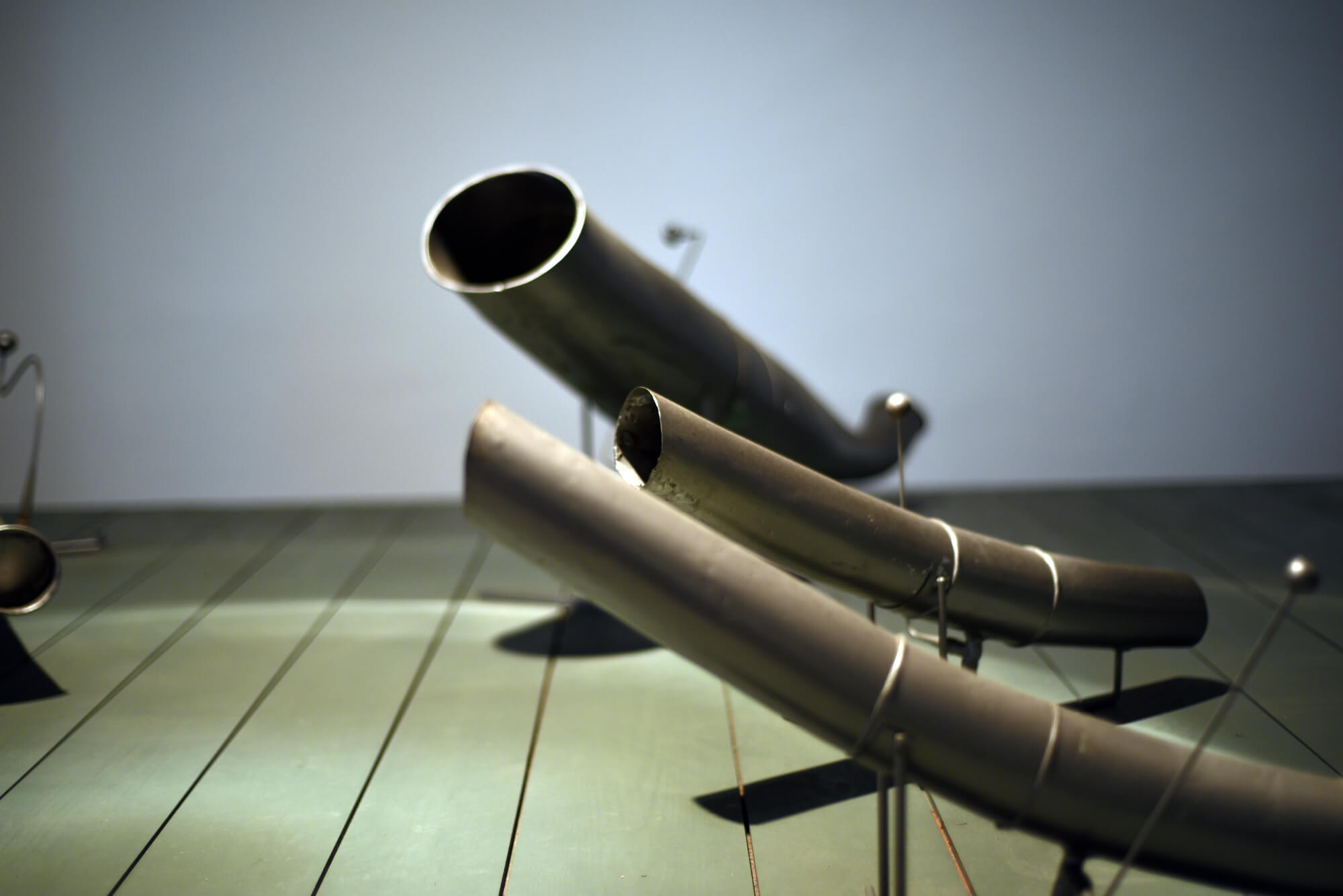1990 – nickel, water, air, wood
In a room on the top floor of the villa, there is an antique brass faucet placed over a small white marble basin, a presage of the water which plays a main role in this Sonata.
The floor is almost entirely covered by a low, irregularly shaped podium that has been painted the same silvery gray as the instruments placed upon it. The “conductor” is a robotic compressor (designed and built by the artist) that blows air through the small tubes linked underneath the platform to the nickel instruments, which all contain different water levels. The music produced by the seven instruments (first violin, second violin, harp, contrabass, violoncello, viola, flute) is a gurgling sound which is orchestrated with great mastery by the conductor.
Precise automatic mechanisms, activated by an electrical switch on the wall, define the phases of the concert: it begins with the instruments’ tuning up, followed by a pause as the lights go down, and then the concert begins. Among the many variations in sound, one can easily distinguish the pauses, crescendos and other traditional musical devices in the Sonata. At the end, after a long diminuendo, just one poetic drop of water slowly and clearly marks time, while the other notes slip away into nothingness. Thus, the music ends and the lights come up signalling the end of the performance.

